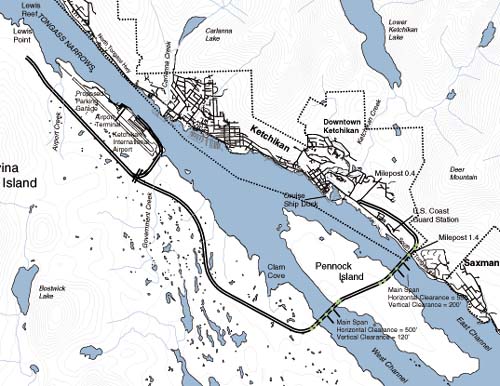One of the most important aspects in Benefit Realization Management (BRM) is to have metrics that allow to track and monitor the benefits. I guess you all can think about projects that didn't have right metrics, usually those where you think: "Wow, did they really think about this?". The first ones that come to my mind are related to underused airports in areas in Spain with very low population rates. Spain has more airports than Germany (59 vs 50), even when our population is just half.
Anyway, my intention wasn't to complain about airports but to mention an example of poor BRM that I have found and which apparently is very famous: the Bridge to Nowhere.
Let me explain the basic information. Its real name is the Gravina Island Bridge, since it was intended to connect the city of Ketchikan (Alaska 9000 inhabitants) with Gravina Island, where 50 people live. and an international airport is located (seriously, this post isn't about airports). The original transport between those points was made by a ferry service, yet some Ketchikan residents complained about the waiting time and the car fee. That's the reason why a project was proposed in 2008, with challenging technical specifications. A bridge taller than the Brooklyn Bridge and as long as the Golden Gate was about to be built, with an estimated cost of $398 million.
 |
| Ketchikan and Gravina Island map. from taxpayer.net |
The project was backed by an Alaska congressman and senator, who were seeking for government resources and support. The bridge was never built, yet it was considered for several years, before it was cancelled in 2015. The decision was to invest a tiny part of the huge bridge budget in improving the existing ferry service. Happy ending, isn't it?
The project was a clear example of mismanagement of public resources and wasteful government spending. But also, from our BRM perspective, it is clear that the cost-benefit (value!) analysis was never performed, or taken into consideration. For organizations, the outcomes of a project should turn into benefits, and those into value. Here, the saddest part is that several years were needed until basic evaluation and corrective action (Stop the bridge!) were taken.
So, you know, if you plan to travel to Ketchikan soon, remember that (fortunately!) you will have to take a boat.
Sources:
No comments:
Post a Comment